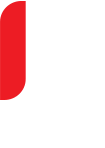If you work in the electronics industry, you’ve likely heard one of these in conversation with reps and manufacturers:
“We are a sales company. We don’t do marketing. That’s up to the manufacturer.”
“I hire sales reps to go out and find new customers. We are just a manufacturer.”
And here lies the great paradox! For any company, the number one priority is to sell. Without sales, there is no new business, and without new business, companies decline. So why is the responsibility for marketing and prospecting tossed around like a game of hot potato? And how can a simple process resolve this confusion on both sides and immediately begin creating new opportunities? Read on!
Why is there disagreement between manufacturers and reps?
There’s the obvious answer: The manufacturers and reps are two different organizations, each with their own processes and priorities. To complicate it even more – each manufacturer works with several reps, and vice-versa, all unique from one another.
But the obvious answer misses the fundamental cause. In my experience, this hot-potato-effect comes from the lack of education in the electronics industry on how to generate real and well-qualified sales opportunities. And by addressing this education gap, both manufacturers and reps can immediately begin generating measurable business growth.
Why does the electronics industry have trouble creating real sales opportunities?
Let’s take a trip back through the history of marketing electronic component, devices, and related services. Traditionally, the electronics industry has been a very new-product-oriented market as companies maintain pace with rapidly evolving technologies. Thus, the tendency is to always promote new products.
If you’re reading this, I’m confident your product is not an impulse buy. In this industry, buyers aren’t reacting to new product announcements, they’re reacting to need. And unless that need happens to coincide with your latest and greatest (and it probably doesn’t), you’re wasting your message.
Instead, buyers – such as design engineers – are searching for education to help them design better products: content in the form of research, whitepapers, help guides, and case studies. If you’re not helping educate those buyers, you’re not building the trust and awareness needed to convince the buyer that your product is the solution to designing better products.
Yet, most manufacturers don’t offer useful content like this even though they need it to connect with design engineers, successfully create new opportunities, and provide their rep firms with the tools to sell.
And therein lies the rub!
What’s the solution to aligning manufacturers and reps?
You guessed it: educational content, and the responsibility to generate such content falls on the manufacturer. This does not mean NPIs, catalogs, brochures, or data sheets. Rather you need articles, whitepapers, interviews, videos, lists, and blogs.
“But Graham, this sounds like a lot of work.”
Nope – it can be quite simple, and the little time invested now will save significant time in the future.
The following is for the manufacturers to follow. If you’re a rep reading this, forward this on to your principals to see how they can assist your sales efforts, then continue reading to learn how you can play a part.
In summary, you will be sending emails to your contact list to offer them free content in return for submitting a registration form. In addition to the basics – name, company, email – the registration form will ask what they intend to buy and when. Sometimes, it’s as simple as just asking!
Here’s the process:
- If you do not already have an email or marketing automation platform, set up a simple account such as MailChimp, Constant Contact, or ActiveCampaign.
- Compile your educational content: search your website, ask your engineering colleagues if they have content on their laptops, or search the office for printed content that can be digitized. If they’re not already – upload them to your website.
- Signup for a landing page builder such as InstaPage, Unbounce, or similar. If you happen to have a marketing automation platform, like Marketo or HubSpot, see if this landing page functionality is already available. If so, you won’t need another landing page builder. The landing page is where you will use a registration form to capture data from your contacts.
- When you build the registration forms, ask your prospects if they intend to buy your company’s type of product and when. The question can be simple: “Will you need to purchase EMI Filters? A – Yes, in 0 to 6 months, B – Yes, in 7 to 12 months, C – Yes, in 13 to 24 months, D – No, not at this time.” Just ask them!
- Prepare and send out an email announcing your free piece of content. Link the email’s call to action – such as “Start Reading” or “Watch Now” – to your landing page. This will direct the recipients to the landing page so that you can capture the lead once the form is submitted.
This is where the manufacturer and rep can both assist.
When the above process is complete, the manufacturer creates a LinkedIn post about the free content that directs viewers to the landing page. From here, every salesperson in the organization can share that post and landing page with one simple click of the “share” button on LinkedIn. Then, the reps can follow the same process – creating even more leads by sharing the content to their LinkedIn connections and territories.
This is just one simple process that creates a social groundswell of brand awareness and lead generation, while also generating activity through the manufacturer’s email list.
Want to see how this is done in practice? Check out our webinar – “Whose Job Is It?” – for more details on how to build this process, with visualizations to guide the way. And be sure to follow our blog; we’ll have more on this soon!




